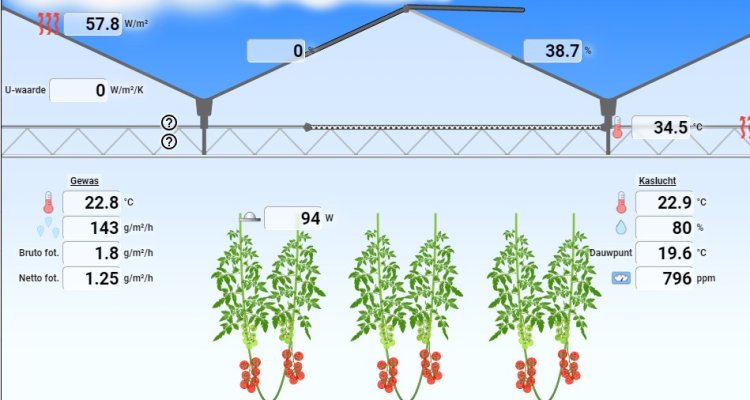
Software
KASPRO: the Virtual Greenhouse
The KASPRO model simulates the greenhouse climate, energy, and CO2 management in greenhouses, from low to high tech, in relation to the outside climate, equipment, cultivation, and climate controller settings. The model was developed many years ago and has since been continuously refined, validated based on practical research, and adapted to the latest developments in climate control and energy saving (de Zwart, 1996, https://edepot.wur.nl/195238).
Capabilities
KASPRO accurately calculates the extent to which cultivation conditions improve when the equipment or climate control is changed. This allows users to objectively and predictively determine under which conditions measures can be profitable or intended changes to the cultivation climate can be achieved. Examples include alternative greenhouse covering materials, the use of lighting, cooling, or other CO2 sources. Additionally, the potential of energy-saving techniques can be determined in an objective and reproducible way and various scenarios can be compared, something that is often complex and time-consuming with practical trials. KASPRO takes into account factors such as the (lab measured) light transmission of greenhouse covering materials and screens, airflows through screens, the resulting light distribution in the greenhouse and over crop layers, the moisture balance including condensation on the greenhouse cover and crop, different types of lighting, and air treatment systems, modeled according to the latest state of the art.
For whom?
KASPRO is used for complex project-based analyses by experts from the Business Unit Greenhouse Horticulture, where all functionalities of the model are available. Additionally, KASPRO is used in research and demonstration projects such as the Autonomous Greenhouse Challenge, the Data project, Agros and the Digital Tomato Twin. KASPRO is also the "engine" behind educational tools KASSIM and KASSIM the Game and the Greenhouse Energy Guide.
For companies that want to perform simulations with KASPRO themselves, a web API is available. By developing a user interface tailored to the desired functionality and flexibility, they are able to develop their own applications with KASPRO.